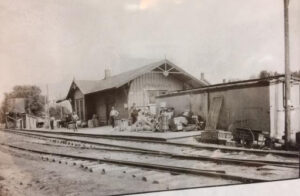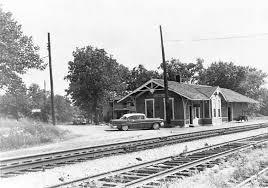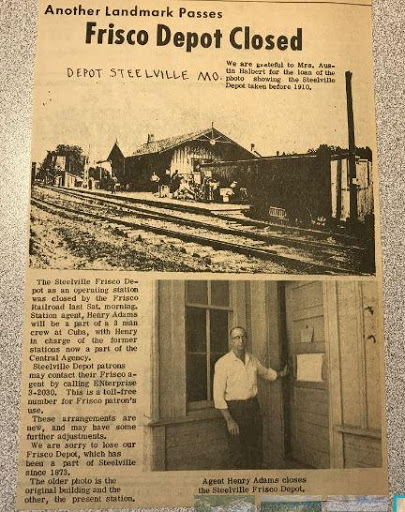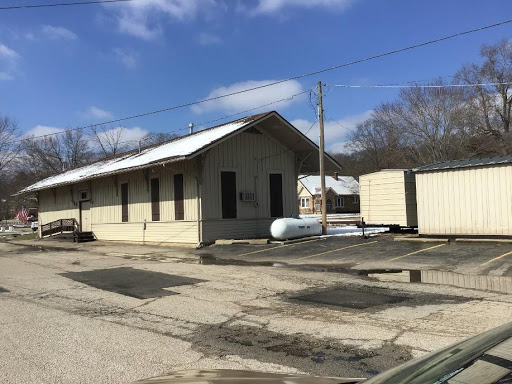
The Frisco Railroad, the Tracks, and the Frisco Depot
By: Haven Albin and Lilly Troutt
The railroad still wasn’t finished building tracks after 14 years and was sold to the San Francisco Railroad. Steelville, St. Louis, Cuba, Salem and Little Rock, AR, started to build a railroad in the Spring of 1875. They transported lead and coal. The depot was first built in Steelville around the time the tracks were built. The train depot was rebuilt in Steelville after the great flood in 1889 after being torn apart. It was located north of, and paralleled with, Main Street. The new name for the track was the Frisco Railroad.
Between the years 1968-1970 the tracks were doing good business. The new tracks were originally built with concrete ties, these ties were the longest in the United States at the time. However, many of these were found to be defective and were replaced with wooden ties.
Then, in the 1970’s business had declined so much that they rented the depot building to the Steelville Civics Group. Eventually, the group bought it and kept it for 10-12 years. The Frisco Railroad ran from Cuba through Steelville, and all the way to Salem. It was used to transport passengers and freight. The line was used by the Burlington Northern Santa Fe Railway(BNSF) as late as 2002 to provide service to the AMAX lead mines in Viburnum, Mo. The train also hauled wood and charcoal for furnaces.
When the train was coming through town, it was bringing back lead. In 2005, the soil in Cherryville, Missouri was found to be contaminated with lead. This provoked someone to sue the line, because it made them very sick. Sadly, the Frisco Company lost in the case. The BNSF didn’t support the Frisco railroad in court, so the station didn’t fight back, and just closed down to show BNSF that it was their loss, too. If anyone wanted to sue the railroad for lead contamination they could. The depot was shut down a small amount of time later, but the San Francisco company had to keep possession of it because if they sold it, it might lead to a lawsuit. The Frisco Railroad could also be sued if the railroad was turned into walkway, because someone could possibly get sick from the lead contamination. So, they abandoned it.
When the civics group was no longer interested in the depot, they sold it to the VFW (Veteran of Foreign Wars) post 6479. VFW still owns the depot. Now they use the freight room for meetings, the clerks room as a fully functioning kitchen, and the passenger room as a storage room.

The picture below was the depot. The picture was taken in 1908.


The picture above was taken
October 15, 1966



The Frisco Depot Today
Works Cited
People
Information received from Mr. Bob Bell (Local Historian and Businessman - November 27, 2019 and February 22, 2019)
Information received from Mr. Donald Gummersheimer (VFW Post 6479 - January 17, 2019)
Information received from Mr. Arthur Cook (VFW American Legion 345 - January 18, 2019)
Websites
http://www.frisco.org/shipit/index.php?threads/bnsf-officially-discontinues-service-over-lead-belt.4703/ (Website accessed January 17)
http://www.frisco.org/shipit/index.php (Website accessed January 17)
http://michaelminn.net/railroads/stations/steelville/ (Website accessed January 17)
https://thelibrary.org/lochist/frisco/depots/floorplans/MO.Steelville.pdf
http://www.minesandcommunities.org/article.php?a=866 (Website accessed February 11)
Books
History Of Missouri By: The Goodspeed Publishing Company (Pages 40-41)
Images of America, Steelville: Arcadia Publishing, Charleston, South Carolina By: Bob Bell and Emily Bell (Pages 9-18)
